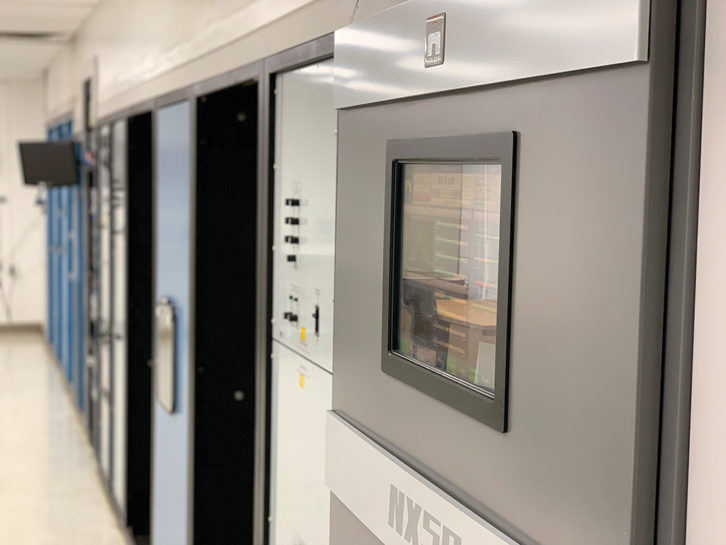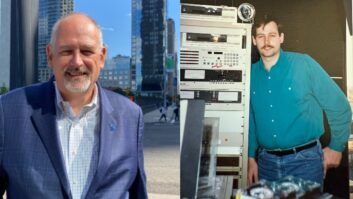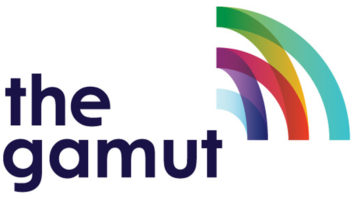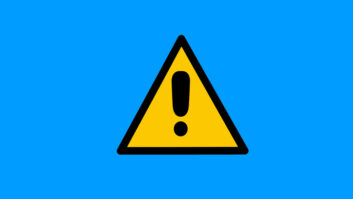
It is the age-old question: What came first, the chicken or the egg? Arguments can be made for both, so the question remains unanswered, at least in the philosophical sense. But what does that have to do with broadcast radio? In that regard, I suppose we could ask whether the transmitter or receiver came first, and the answer would be that they both came at the same time.
In the early months of this year, we are faced with a similar question: What has to come first for all-digital AM to succeed: a critical mass of HD-Radio capable receivers, or a significant number of stations transmitting in the all-digital mode?
As the FCC considers allowing AM stations to convert to the MA-3 all-digital mode on a voluntary basis, broadcasters are faced with a choice as to which stations it makes sense to convert.
In some situations, the choice would seem to be fairly clear. If an AM station’s programming is 100% duplicated in the coverage area by an FM signal, whether from a sister full-power station or a translator with good market coverage, chances are that the majority (if not all) of the listeners are tuning into the FM signal anyway, and there is no downside to converting the AM to the all-digital mode, at least in terms of audience impact. The all-digital signal will give listeners another high-fidelity means of getting the station’s programming.
But in other situations, there may be some FM duplication of coverage and programming, but is it enough that no listeners are disenfranchised if the analog AM signal goes away? That is a decision that each licensee will have to make; only those who are intimately familiar with the market, their radio stations and audiences have sufficient information to make that determination.
I suspect that this is where the vast majority of AM stations are — in a situation that is anything but clear-cut one way or the other.
WHERE TO START?
Standalone AM stations would seem to be poor candidates for all-digital conversion. If you believe the HD Radio penetration data, that means as soon as the all-digital switch is flipped, at least 50% of the station’s listeners will get nothing but white noise. And while the statistics on receiver proliferation are undoubtedly correct on the whole, I imagine that the real numbers vary widely depending on region, demographics, the local or regional economy and other factors. All this is part of what amounts to a very local decision as to whether all-digital conversion is right for a particular AM station.
And then there is the elephant in the room: cost of conversion. Since the MA-3 mode primary digital carriers fit within the spectrum occupied by the analog signal, it is likely that most stations have sufficient antenna bandwidth to handle the all-digital spectrum.
This is in contrast to the demands of the digital hybrid mode that is authorized at present. A lot of stations that got on that bandwagon had to do a significant amount of work to get their antenna systems in shape to pass the digital sidebands. I did a bunch of those myself some 15 years ago, and it wasn’t easy.
So assuming few or limited antenna issues, all-digital conversion costs are primarily the Xperi licensing, and the signal generation equipment, which can run into the tens of thousands of dollars. Figure in some needed infrastructure changes for many stations and the costs will be even higher. That may not be a huge thing for a fully-duplicated AM in a profitable local cluster, but for the ma-and-pa AM with a translator in a small market, it may be a deal killer.
And that brings us back to the “what comes first” question.
SO MUCH NOISE
As Ben Downs so eloquently argued in his petition for rulemaking that eventually resulted in the all-digital AM NPRM, the AM broadcast medium is in trouble. In decades past, the issue was interference. In the here and now, it is man-made noise. The interference issue remains, but in many cases it is eclipsed by the noise problem.
The interference issue is, if you will pardon the pun, static (the adjective, not the noun). By and large, other than as a result of normal ionospheric variations, interference for a particular station’s signal is what it is … and what it was. The FCC’s rules and international treaties tend to keep interference from increasing significantly beyond current levels.

But the noise problem, now that’s anything but static. It is ever increasing. I encountered an excellent example of this at my home a few months ago.
I began experiencing a lot of new noise on the AM band as well as on the lower HF bands. The noise produced such a roar that I could not listen to any AM signals at home without at least some underlying noise. The big 50 kW signals were at least listenable, but they weren’t clean. Lower-powered signals were completely unlistenable.
I tried everything I could think of to track down the noise source without success, walking around the house with a battery-operated portable radio, listening for an increase or decrease in the roar as I moved from room to room. The noise seemed to be ubiquitous. I eventually concluded that it must be coming from my neighbor’s solar charge controller or inverter.
Then one day, I happened to have a radio on when I turned off the switch for the front exterior lights. We normally leave those lights on all the time, but for some reason I turned them off that day … and instantly the noise disappeared! AM reception was clear and clean, and the S-9 noise floor on the 80, 60 and 40 meter bands dropped to S-2! I turned the exterior lights back on, but the noise remained gone.
I left the lights on, thinking that the noise would eventually come back and I could investigate further, but it never did. And then later that day, as I was backing the car out of the garage, I noted that one of the front exterior lights was out. I opened the fixture and looked at the LED bulb, and I found it discolored. Clearly it had been hot. Most likely it had been arcing internally, and when I turned off the switch, the arc extinguished, and the spacing was sufficient that it did not return when I turned the circuit back on. I replaced that bulb with a new GE LED bulb, and all was well. Still no noise.
The point here is that what happened at my house with one noisy LED bulb (in a house that has 100% LED bulbs) happens all the time in other homes and businesses. It may not be an LED bulb. It may be the motor controller in a high-efficiency HVAC unit. It may be the microprocessor in a washing machine or refrigerator. Or it may be solar charge controllers and inverters. Each noise source adds to the RSS interference level at every receive location, and as more and more devices are added, the noise floor goes up and up and up. Each device is okay by itself, but each one adds to the total.
LET’S GET MOVING
At this late date, I daresay that there is nothing that can be done about the noise issue. That train left the station a long time ago, and there is a lot of momentum. In my opinion, this noise issue spells doom for most of the AM broadcast medium. Only the strongest stations that produce a field of 10 mV/m or more throughout the coverage area have a chance at survival.
This is where all-digital comes in. It has a demonstrated immunity to noise. It’s not a panacea, but it does perform well in our 21st century noisy environment.
So I’m going to go out on a limb here and agree with proponents that if AM is to survive for the long term, it has to make the jump to all-digital.
But what comes first? Do we wait for a critical mass of receivers before making that jump, or do we go now? Do we drive the demand for digital receivers by going all-digital now, or is that a pipe dream? Or … is it way too late for any of this, making this a pointless discussion?
I don’t have a Magic 8-Ball that I can shake and get answers, but I do believe that the AM broadcast medium has both value and a future — if we get moving now, in at least a limited way, with conversion to the noise-immune all-digital MA-3 mode. Receiver proliferation will independently continue, driven by the auto industry and FM. AM can ride that wave. But if the AM medium dies while we wait … well … it won’t much matter if there are plenty of digital AM capable receivers out there.
It’s certainly something to think about.
Watch a Radio World webcast about all-digital on the U.S. AM band on Feb. 19. Info is at https://tinyurl.com/rw-sunrise.
Cris Alexander, CPBE, AMD, DRB, is director of engineering of Crawford Broadcasting Co. and technical editor of RW Engineering Extra. Email him at [email protected].







